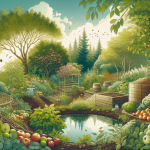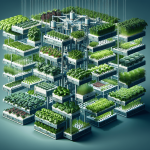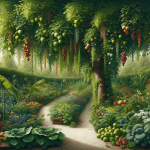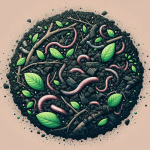This post may contain affiliate links. As an Amazon Associate, we may earn commissions from qualifying purchases.
Have you ever wondered how you can create a garden that supports biodiversity? You might not have pondered this question over your morning coffee, but it’s a topic that’s not only timely but also vital for the health of our planet. Biodiversity, after all, isn’t just an abstract concept tossed around by ecologists—it’s essential for maintaining the ecosystems that give us clean air, water, and food.
Gardening can be one of the simplest and most direct ways to help the environment. So, if you’ve got a patch of land, big or small, why not transform it into a haven for diverse plant and animal life? Let’s chat about how you can turn your garden into a biodiversity hotspot with actionable steps, simple tips, and down-to-earth advice.
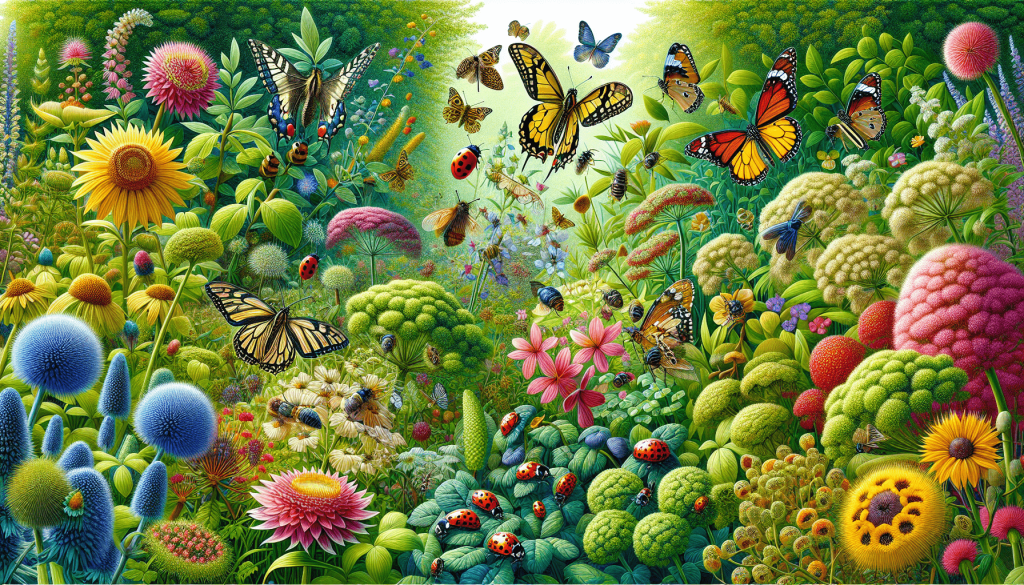
Understanding Biodiversity: Why It Matters
First things first, let’s break down what biodiversity actually means. In the simplest terms, biodiversity refers to the variety of life in a particular habitat or ecosystem. This includes everything from the smallest microorganisms up to large mammals. When an ecosystem is diverse, it is generally more stable and resilient to changes or shocks.
Key Benefits of Biodiversity
You might be thinking, “What’s in it for me?” Well, supporting biodiversity in your garden has a range of benefits. Here’s a snapshot of what you can expect:
| Benefit | Description |
|---|---|
| Improved Pollination | A diverse garden attracts various pollinators like bees, butterflies, and birds, leading to healthier plants and more fruitful harvests. |
| Pest Control | Biodiversity introduces natural predators for pests, reducing the need for chemical pesticides. |
| Soil Health | Different plants contribute various nutrients to the soil, improving its overall quality. |
| Water Management | A variety of plants can help manage water more efficiently, reducing erosion and maintaining moisture levels. |
| Aesthetic Appeal | A biodiverse garden is generally more visually appealing with a range of colors, textures, and forms. |
Getting Started: Planning Your Biodiverse Garden
Every masterpiece starts with a plan, and your garden is no different. Don’t feel overwhelmed; think of this planning stage as your blueprint for creating something beautiful and beneficial.
Assess Your Space
The first step is to know what you’re working with. Whether you have a sprawling backyard or a modest balcony, every inch can contribute to biodiversity. Take note of the following elements:
- Sunlight: Observe how much sunlight different parts of your garden get throughout the day.
- Soil Type: Is your soil sandy, clay-based, loamy, or somewhere in between?
- Water Availability: Do you have access to a water source? Consider installing rain barrels to collect natural water.
- Climate: Understand the climate in your area to choose plants that will thrive.
Setting Goals
Setting goals helps you envision what you want your garden to achieve. Do you want to attract pollinators? Are you more interested in building a home for local wildlife? Write down your priorities to help guide your plant choices.
Choosing the Right Plants
Plant selection is critical. The plants you choose will create the foundation for your garden’s ecosystem. Aim for a mix of native species, flowering plants, shrubs, and trees to create a multi-layered environment.
Native Plants: The Backbone of Biodiversity
Native plants are adapted to your local environment, requiring less water and maintenance while providing essential resources for local wildlife. Here’s a quick guide:
| Plant Type | Benefits | Examples |
|---|---|---|
| Wildflowers | Attract pollinators, low maintenance | Coneflower, Aster |
| Grasses | Provide habitat and food for insects and birds | Little Bluestem, Switchgrass |
| Shrubs | Offer shelter and nesting sites | Red Osier Dogwood, Serviceberry |
| Trees | Support bird life and improve air quality | Oak, Maple, Dogwood |
Adding Variety: Annuals and Perennials
While native plants are fantastic, don’t overlook the benefits of adding a mix of annuals and perennials. Annuals like zinnias or marigolds can instantly add color, whereas perennials such as lavender or salvia come back year after year, reducing your planting duties.
Edible Plants
Why not combine aesthetics and utility by growing edible plants? Herbs, vegetables, and fruit trees support biodiversity while providing you with fresh produce. Here’s a table to help you pick:
| Plant | Pollinator Attractiveness | Additional Benefits |
|---|---|---|
| Lavender | High | Great for bees, aromatic herb |
| Tomato | Medium | Home-grown tomatoes, easy to grow |
| Blueberry Bush | High | Supports birds, delicious fruit |
| Squash | Medium | Versatile vegetable, attracts bees |
Creating Microhabitats
Just like people, different creatures prefer different environments. By creating microhabitats in your garden, you can cater to a wider range of species.
Water Features
Even a small water feature like a birdbath can significantly enhance your garden’s biodiversity. For larger spaces, consider adding a pond with native aquatic plants. This provides a habitat for frogs, birds, and beneficial insects.
Rock and Brush Piles
Rocks and brush piles might not be the most glamorous elements, but they offer essential shelter for insects, amphibians, and small mammals. Place these in less visible parts of your garden if you prefer.
Dead Wood and Leaf Litter
Instead of disposing of tree branches and fallen leaves, incorporate them into your garden. Dead wood and leaf litter create habitats for decomposers like fungi, insects, and even small vertebrates.
Nesting Sites and Feeders
Install birdhouses, bat boxes, and insect hotels to provide nesting sites. Bird feeders can also attract a variety of species, especially during colder months when food is scarce.
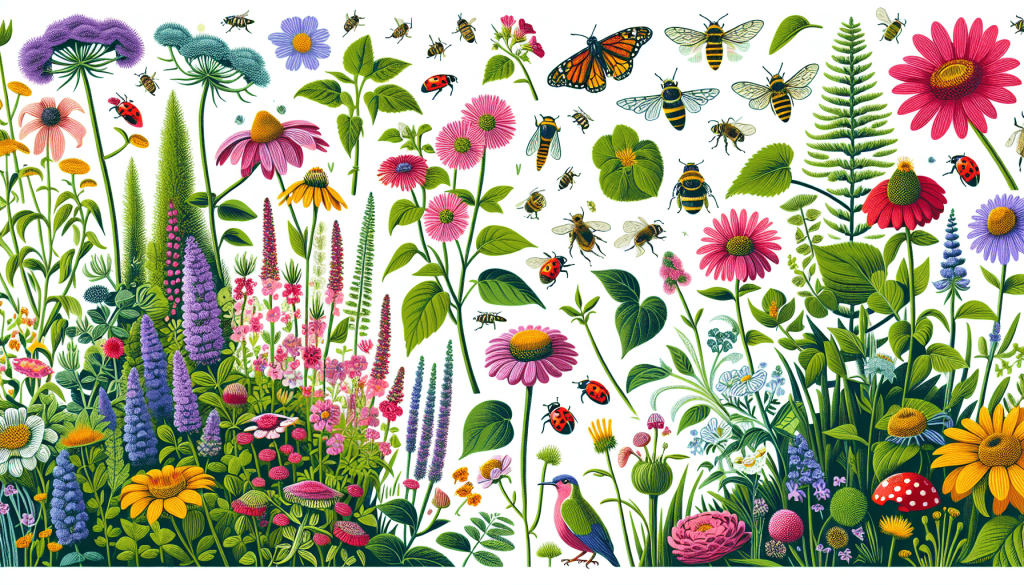
Soil Health: The Foundation of Your Garden
Healthy soil is a non-negotiable for a thriving, biodiverse garden. Rich in organic matter and teeming with life, good soil supports plant growth and resilience against diseases.
Composting
One of the best ways to enrich your soil is by adding compost. Composting kitchen scraps, garden waste, and fallen leaves can create nutrient-rich humus. You can buy a compost bin or create a simple compost heap.
Mulching
Mulch not only conserves soil moisture but also helps suppress weeds and add organic matter to the soil as it breaks down. Use organic mulches like straw, wood chips, or leaf litter.
Avoiding Chemicals
Avoid using synthetic pesticides and fertilizers. These can harm beneficial insects and microorganisms. Instead, turn to organic solutions like neem oil for pest control and natural compost for fertilization.
Engaging with Your Garden: Maintenance and Observation
Creating a biodiverse garden isn’t a set-it-and-forget-it deal. Regular maintenance and observation can help you understand what’s working and what isn’t, allowing you to make necessary adjustments.
Regular Weeding and Pruning
While a wild garden can be beautiful, regular weeding and pruning are necessary to keep invasive species at bay and encourage healthy growth.
Monitor Plant Health
Regularly check your plants for signs of disease or pest infestation. Early detection can make it easier to apply organic treatments before problems escalate.
Seasonal Updates
Different seasons bring different challenges and opportunities. Update your planting strategy according to the time of year. For example, add bird feeders in winter and refresh garden beds with seasonal annuals in spring and summer.
Community and Education: Sharing Your Biodiverse Garden
One of the most rewarding aspects of creating a garden that supports biodiversity is sharing it with others. This not only spreads awareness but can also bring your community together.
Host Garden Tours
Invite friends, family, and neighbors to tour your garden. Explain the benefits of each plant and habitat feature. You might inspire others to start their own biodiversity gardens!
Join Local Gardening Groups
Connecting with local gardening groups can enrich your knowledge and provide a platform to share tips and experiences. Many communities also have native plant societies that offer resources and advice.
Participate in Citizen Science
Why not contribute to scientific understanding by participating in citizen science projects? Websites and apps allow you to log plant and animal species in your garden, contributing valuable data for biodiversity research.
The Impact of Your Biodiverse Garden
Creating a garden that supports biodiversity can have a ripple effect, benefiting not just your local environment but also inspiring broader community action. Your garden becomes a mini-ecosystem, embodying the living, breathing proof that small changes can make a significant impact.
Broader Environmental Benefits
A garden supporting biodiversity can have wider-reaching impacts, such as:
- Contributing to local and regional biodiversity by acting as a small but important natural reserve.
- Helping to combat climate change by sequestering carbon and promoting cleaner air.
- Offering educational opportunities for schools and community groups to learn about ecology and conservation.
Personal Satisfaction
The sense of fulfillment you’ll gain from fostering a thriving, biodiverse garden is unparalleled. It’s not just about the visual appeal; it’s about knowing you’re making a tangible, positive impact on the planet.
In conclusion, creating a garden that supports biodiversity is a rewarding experience that benefits not only your immediate environment but also contributes to the health of our planet. From selecting the right plants and creating microhabitats to maintaining healthy soil and engaging with your community, every step you take makes a difference. So go ahead, plan, plant, and nurture your way to a garden that’s alive with color, life, and purpose.

